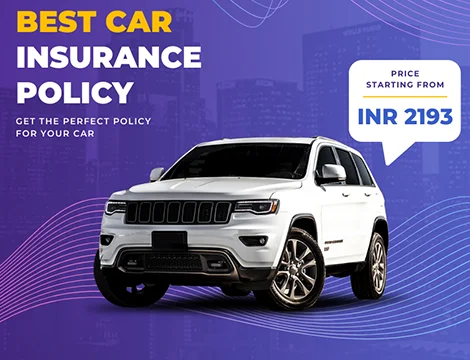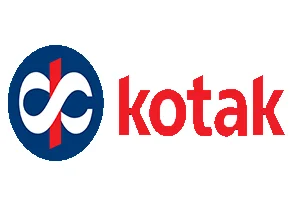Save Upto 80% on your Car Insurance Premium
*Savings on premium are based on the comparison between the highest and the lowest premium for ODC by different insurance providers for a vehicle with the same IDV and same NCB for all providers.
*Insurance is the subject matter of solicitation. For more details on benefits, exclusions, limitations, terms and conditions, please read sales brochure/policy wording carefully before concluding a sale.










Importance of Car Insurance
Legal Requirement: In most jurisdictions, car insurance is mandatory. Driving without insurance can result in severe penalties such as fines, license suspension, and even imprisonment. The requirement for insurance ensures that drivers can cover costs associated with accidents, protecting both the policyholder and other road users.
Financial Protection: Car insurance provides financial protection against various risks. It covers repair costs, medical expenses, and liability claims, ensuring that an accident doesn’t lead to financial ruin. The financial burden of accidents, theft, and other incidents can be substantial, and having insurance helps mitigate these costs.
Peace of Mind: Knowing you have insurance coverage provides peace of mind. Whether it’s a minor fender bender or a major collision, you can drive confidently knowing you are protected against unexpected expenses. This sense of security is invaluable for drivers.
Types of Car Insurance Coverage
Liability Insurance: Liability insurance is the most basic type of coverage and is usually mandatory-
- Bodily Injury Liability: Pays for injuries you cause to others in an accident. This includes medical expenses, pain and suffering, and lost wages.
- Property Damage Liability: Covers damage you cause to someone else’s property, such as their vehicle, home, or other structures.
Collision Insurance: Collision insurance covers the cost of repairing or replacing your car if it’s damaged in an accident with another vehicle or object, regardless of who is at fault. This coverage is particularly important for newer or more expensive vehicles.
Comprehensive Insurance: Comprehensive insurance covers non-collision-related damages to your vehicle-
- Theft: Covers the loss of your vehicle if it is stolen.
- Vandalism: Covers damage caused by acts of vandalism.
- Natural Disasters: Covers damages from events like hurricanes, floods, earthquakes, and hail.
- Fire: Covers damage caused by fire.
- Falling Objects: Covers damage from falling objects, such as tree branches or debris.
Personal Injury Protection (PIP): PIP, also known as no-fault insurance, covers medical expenses for you and your passengers, regardless of who is at fault in an accident. It may also cover lost wages, rehabilitation costs, and funeral expenses.
Uninsured/Underinsured Motorist Coverage: This coverage protects you if you’re involved in an accident with a driver who has no insurance or insufficient insurance. It covers medical expenses and, in some cases, property damage. This is crucial as not all drivers comply with insurance laws, and you need protection against such scenarios.
Gap Insurance: Gap insurance is particularly useful for new cars. If your car is totaled in an accident, gap insurance covers the difference between the car’s actual cash value and the amount you still owe on your loan or lease. This is important because cars depreciate quickly, and traditional insurance may not cover the entire amount owed.
Factors Affecting Car Insurance Premiums
Driving Record: Your driving history is one of the most significant factors affecting your premium. A clean record with no accidents or traffic violations typically results in lower premiums. Conversely, a history of accidents or violations can significantly increase your rates.
Age and Gender: Statistical data shows that younger drivers and males often pay higher premiums due to higher risk levels. Older, more experienced drivers usually benefit from lower rates. Insurers consider young male drivers to be at higher risk for accidents, influencing the cost of their premiums.
Location: Where you live affects your premium. Urban areas with high traffic density and higher crime rates generally have higher premiums compared to rural areas. Factors like local laws, weather patterns, and the incidence of accidents or thefts also play a role.
Vehicle Type: The make, model, and age of your car impact your insurance costs. Expensive, high-performance, or newer cars often cost more to insure due to higher repair or replacement costs. Vehicles with high safety ratings, anti-theft features, and lower repair costs typically attract lower premiums.
Credit Score: In many regions, insurers use credit scores to help determine premiums. A higher credit score can lead to lower insurance costs, reflecting the insurer’s belief that you’re less likely to file a claim. This is because individuals with higher credit scores are statistically considered more responsible.
Coverage Limits and Deductibles: Choosing higher coverage limits or lower deductibles increases your premium. Conversely, lower coverage limits and higher deductibles reduce your premium but increase your out-of-pocket costs in the event of a claim. Balancing your deductible with what you can afford to pay in case of a claim is crucial.
Usage-Based Insurance: Some insurers offer usage-based insurance, where your premium is based on your driving habits. This can include factors such as mileage, speed, braking patterns, and time of day you drive. Good driving behavior can lead to significant discounts.
How to Choose the Right Car Insurance Policy?
Assess Your Needs: Consider factors such as your car’s value, your driving habits, and your financial situation. If you have an expensive car or a long commute, you may need more comprehensive coverage. Evaluate how much coverage you need to protect your assets adequately.
Compare Quotes: Get quotes from multiple insurers to find the best rates. Make sure to compare similar coverage options to ensure an accurate comparison. Online comparison tools can be very helpful in this process.
Check Insurer Reputation: Research insurance companies’ reputations. Look for customer reviews, financial stability ratings, and claim settlement ratios to ensure you choose a reliable insurer. A company with a good track record in customer service and claims handling is essential.
Ask About Discounts: Inquire about available discounts. Common discounts include safe driver discounts, multi-policy discounts, and discounts for having safety features like anti-theft devices or airbags. Many insurers offer loyalty discounts for long-term customers as well.
Review the Policy Details: Carefully review the terms and conditions of any policy before purchasing. Ensure you understand what is covered, the exclusions, and the claims process. Pay attention to the fine print to avoid surprises later.
Detailed Coverage Options
Bodily Injury Liability: Covers legal fees, medical expenses, and lost income for other parties if you are at fault in an accident. It is essential for covering potential lawsuits resulting from serious accidents.
Property Damage Liability: Covers repair or replacement costs for other people’s property damaged in an accident where you are at fault. This includes other vehicles, buildings, and structures.
Medical Payments Coverage: Provides reimbursement for medical expenses for you and your passengers after an accident, regardless of fault. This can include hospital visits, surgeries, X-rays, and other medical costs.
Rental Reimbursement: Covers the cost of renting a vehicle while your car is being repaired after an accident. This can be a lifesaver if you rely on your vehicle for daily activities.
Roadside Assistance: Offers services like towing, battery jump-starts, flat tire changes, and lockout assistance. This coverage can be very helpful in emergencies, providing peace of mind on the road.
New Car Replacement: If your new car is totaled within the first few years of ownership, this coverage can pay to replace it with a new car of the same make and model. This is particularly useful for protecting against rapid depreciation.
Tips for Lowering Your Car Insurance Premiums
Maintain a Clean Driving Record: Avoid accidents and traffic violations to keep your driving record clean and your premiums low. Defensive driving courses can also help improve your record.
Increase Your Deductible: Opting for a higher deductible can reduce your premium. Just ensure you can afford to pay the deductible in case of a claim. This trade-off can significantly lower your monthly costs.
Bundle Policies: Many insurers offer discounts if you bundle multiple policies, such as home and auto insurance, with them. This not only saves money but also simplifies managing your policies.
Take Advantage of Discounts: Ask your insurer about available discounts and ensure you are receiving all the ones you qualify for. Examples include discounts for good students, military personnel, and retirees.
Drive Less: Lower mileage can result in lower premiums. Consider carpooling, using public transportation, or driving only when necessary. Insurers often offer lower rates for drivers who don’t use their cars as much.
Install Safety Features: Equip your car with safety features like anti-theft devices, airbags, and anti-lock brakes to qualify for discounts. Some insurers offer significant savings for vehicles with advanced safety technology.
Pay Annually: Paying your premium annually instead of monthly can sometimes result in a discount. This can save you money over the year and reduce the hassle of monthly payments.
Common Myths About Car Insurance
Red Cars Cost More to Insure: The color of your car does not affect your insurance premium. Insurers consider factors like make, model, and age of the vehicle, not its color.
Comprehensive Coverage Covers Everything: Comprehensive insurance covers many types of damage but not everything. For example, it does not cover collision damage or routine maintenance issues.
Only the Policyholder Can Drive the Insured Car: Most policies cover occasional drivers with the policyholder’s permission. However, it’s essential to understand who is covered under your policy to avoid surprises.
Older Cars Don’t Need Comprehensive and Collision Coverage: While it’s true that older cars may not require as much coverage due to depreciation, if the vehicle holds significant value or if you can’t afford to replace it out of pocket, maintaining comprehensive and collision coverage may still be wise.
Claims Process
Reporting an Accident: Immediately report the accident to your insurance company. Provide all necessary details, including the time, location, and circumstances of the accident. Take photos and gather witness statements if possible.
Filing a Claim: Fill out the required claim forms and submit any supporting documentation, such as police reports and medical bills. Your insurer will assign a claims adjuster to evaluate the damage and determine the payout.
Damage Assessment: The adjuster will inspect your vehicle and estimate repair costs. It’s essential to cooperate fully and provide any additional information requested.
Receiving Payment: Once the claim is approved, the insurer will issue a payment for the covered amount. This can be used to repair your vehicle or cover medical expenses.
Understanding Policy Renewal
Renewal Process: Insurance policies typically renew annually. Your insurer will send a renewal notice with updated premium information. Review this carefully to ensure your coverage still meets your needs.
Adjusting Coverage: If your circumstances have changed, such as purchasing a new car or moving to a new location, you may need to adjust your coverage. Contact your insurer to make necessary changes before renewing.
Shopping Around: It’s a good idea to compare rates from other insurers before renewing. You might find better rates or more comprehensive coverage options elsewhere.
Dealing with Insurance Lapses
Consequences of a Lapse: Letting your insurance policy lapse can have serious consequences. You may face fines, license suspension, and higher premiums when you reapply for coverage.
Avoiding Lapses: Set up automatic payments or mark renewal dates on your calendar to ensure you don’t miss payments. Maintaining continuous coverage is crucial for keeping premiums low and avoiding legal issues.

